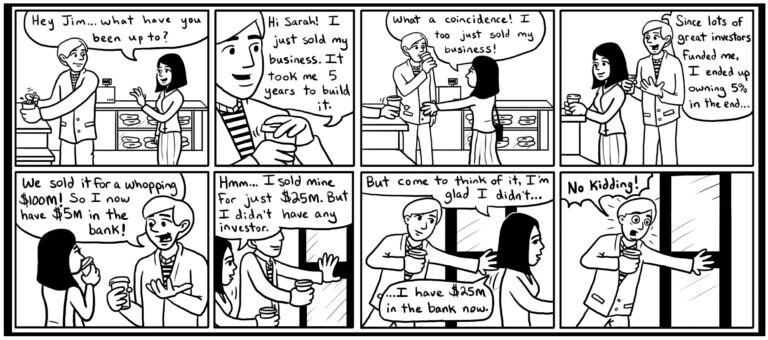608th Roundtable for Entrepreneurs Starting NOW: Live Tweeting by @1Mby1M
Today’s 608th FREE online 1Mby1M Roundtable for Entrepreneurs is starting NOW, on Thursday, June 15, at 8 a.m. PDT/11 a.m. EDT/5 p.m. CEST/8:30 p.m. India IST. CLICK HERE to join. MEETING NUMBER: 2554 766 7804 PASSWORD: startup All are welcome!
Featured Videos
608th Roundtable for Entrepreneurs Starting in 30 Minutes: Live Tweeting by @1Mby1M
Today’s 608th FREE online 1Mby1M Roundtable for Entrepreneurs is starting in 30 minutes, on Thursday, June 15, at 8 a.m. PDT/11 a.m. EDT/5 p.m. CEST/8:30 p.m. India IST. CLICK HERE to join. MEETING NUMBER: 2554 766 7804 PASSWORD: startup All are welcome!
New PropTech Startups Course plus June Coupons

In addition to offering you up to 85% off the following Udemy courses this month, we are introducing the new course, PropTech Startup Case Studies with Sramana Mitra. Through this course, we explore our most informative and inspirational case studies of noteworthy startups founded by property and real estate technology entrepreneurs.
These coupons will expire on June 30, 2023, so enroll today!
Bootstrapping:
Bootstrap First, Raise Money Later with Sramana Mitra: TRY1MBY1MJUN2023BTS
Bootstrapping a Startup with a Paycheck with Sramana Mitra: TRY1MBY1MJUN2023PAY
Video FAQs
Can 1M/1M Help Me Raise Money?
How Does 1M/1M Democratize Entrepreneurship Education?
How Does 1M/1M Democratize Management Consulting?
When Is The Right Time To Join 1M/1M?
Can 1M/1M Help Me With Business Development?
Can 1M/1M Help Me With Market Sizing?
Can 1M/1M Help Me Validate My Product?
Will I Have Private 1-on-1 Sessions In 1M/1M?
How Does 1M/1M Help Entrepreneurs Connect With Silicon Valley?
Mentoring or Consulting?
Why Does 1M/1M Charge $1000 a Year?
Why Does 1M/1M Partner With Local Organizations?
Why Don\’t Mentoring Networks Work?
Why Is It Important To Study With 1M/1M Now?
Dan Stewart Story
Vikrant Mathur Story
Building a Generative AI Startup to $10M+ with a Virtual Team: Chris Lu, CEO of Copy.ai (Part 4)
Sramana Mitra: In terms of function, it was still operating as a UI to OpenAI.
Chris Lu: Right. The early models were not as easy to use compared to the models today. There was still a good amount of work required to get good results.
Sramana Mitra: With the timing of the development of OpenAI and ChatGPT, you were coming in to a window where all of that wasn’t developed and you were offering usability.
>>>Best of Bootstrapping: Co-founders Bootstrapped with Angel Money

If you haven’t already, please study our Bootstrapping Course and Investor Introductions page.
Building businesses has become cheaper by several orders of magnitude. When we spoke in 2015, Co-founder Josh Levy and his team took just over $2 million in angel financing, and had built a profitable business in New York. For those entrepreneurs facing the Series A crunch, this is an important story to follow. You will do fine if you have patient angels, and just use their investment to bootstrap to profitability.
Sramana Mitra: Let’s start at the very beginning of your story. Where are you from? Where were you born, raised, and in what kind of background?
Josh Levy: I was born in New Jersey. I went to high school in New Jersey. I went to the University of Maryland for college where I got an undergraduate degree in Finance. I also did a minor in entrepreneurship. I now live in Brooklyn. BeenVerified is headquartered in New York City. I’ve been on the East Coast my whole life.
Building a Generative AI Startup to $10M+ with a Virtual Team: Chris Lu, CEO of Copy.ai (Part 3)
Sramana Mitra: What kind of conversion rates were you seeing from free to premium?
Chris Lu: We got a lot of people who are international and who aren’t able to pay $49 a month. If you filter it down to the core markets – US, Canada, Australia, UK – it looks like a normal SaaS conversion metric.
>>>Cloud Stocks: Zscaler adds AI Capabilities to Cyber Security

Cloud security provider Zscaler (NASDAQ: ZS) recently reported its quarterly performance that outpaced market expectations. The company is leveraging AI technology to expand its product offerings and drive growth.
>>>Building a Generative AI Startup to $10M+ with a Virtual Team: Chris Lu, CEO of Copy.ai (Part 2)
Sramana Mitra: What do you offer?
Chris Lu: When we first started, we were more of a copywriting app. We help write your email copy or sales copy. However, that has transformed over the years. Our entire vision has always been the business’ business. How do we become the product that helps your business assemble and run itself?
>>>